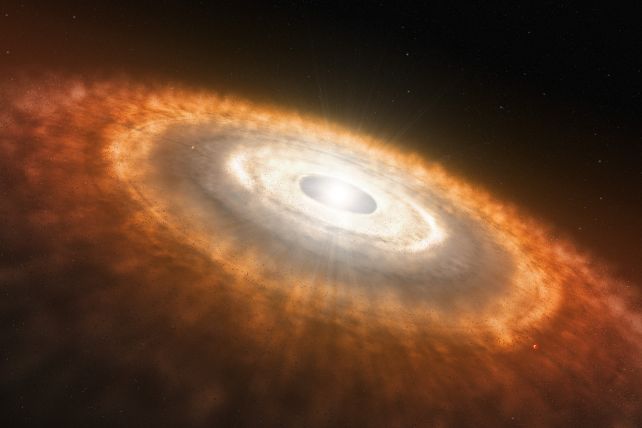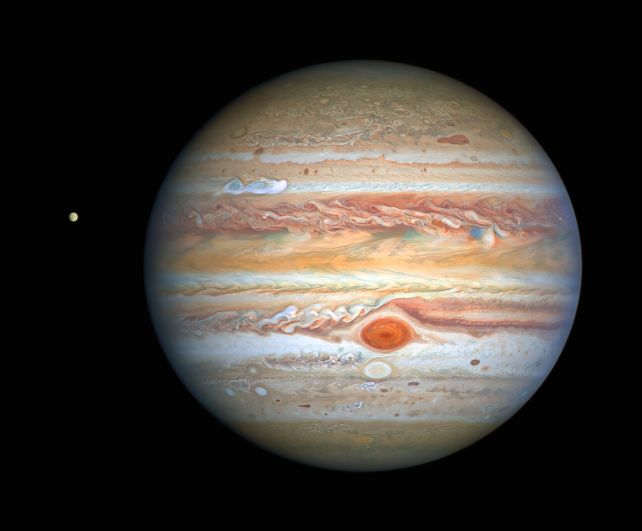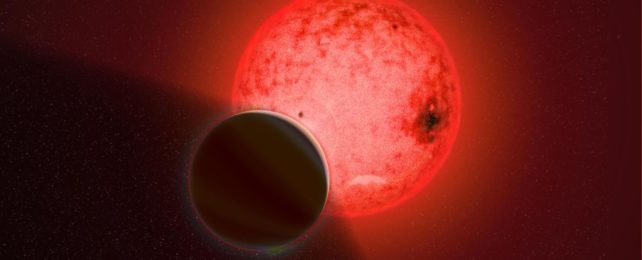A newly discovered planet has properties so bizarre, astronomers don't quite understand how it got to be the way it is.
It's called TOI-4860b, located around 260 light-years away, and it's a gas giant just a little smaller than Saturn. So far, so normal.
But TOI-4860b happens to orbit a tiny, ancient star just a third of the size of the Sun, completing each breakneck lap in just 1.52 days. It joins a small but growing number of peculiar worlds that pose a fascinating puzzle. There are currently no known formation pathways for such chonkin' planets around such small stars.
Two separate papers describing the exoplanet, one submitted to Astronomy & Astrophysics, the other published in the Monthly Notices of the Royal Astronomical Society, have been uploaded on the preprint server arXiv.
As astronomers find and confirm more and more exoplanets – nearly 5,500 at the time of writing – curious gaps are emerging in the types of worlds there are out there.
On the other hand, worlds are also popping up in places we didn't expect. Like giant planets around tiny stars.

Stars form from dense clumps in clouds of dust and gas, which forms a disk that feeds into the growing star, like water down a drain. Once the star is done forming, whatever is left of the disk turns into planets. Many models suggest the amount of material in the disk is determined by the mass of the star; larger stars have more material, smaller stars have much less.
You can no doubt see where this is going. According to our models, red dwarf stars smaller than about 40 percent of the mass and radius of the Sun shouldn't have enough material to form exoplanets above a certain size. Yet we keep finding them. Around a dozen or so have been identified orbiting teeny tiny stars.
TOI-4860b represents a promising candidate for follow-up study, since it was discovered and analyzed by two separate teams using different sets of instruments, obtaining almost identical results.
A team led by astronomer José Manuel Almenara of the French National Center for Scientific Research found the exoplanet is 76.6 percent of the radius and 27.3 percent of the mass of Jupiter, orbiting a star around 34 percent of the mass and radius of the Sun.
A team led by astronomer Amaury Triaud of the University of Birmingham in the UK also found TOI-4860b is 76 percent of the radius, but calculated its mass to be 67 percent that of Jupiter.

Obviously a little more work somewhere to settle on an accurate mass for the planet. But the radius is almost exactly the same, suggesting that the exoplanet is a rather whopping 22 percent of the radius of its star.
So what do we do with this information?
Well, each team had something different to add. Almenara and his colleagues found evidence of a second, unseen exoplanet with an orbital period of 426.9 days and a mass at least 1.66 times that of Jupiter, suggesting that gravitational interactions between exoplanets may have yeeted TOI-4860b in towards its current close orbit.
Triaud and his team found that both star and exoplanet have a similarly high proportion of heavy elements, which could contain clues about the formation. The researchers caution that this interpretation is based on measurements of the exoplanet's mass that were taken under adverse conditions and may be poorly constrained as a result, though.
But both teams suggest we have a lot to learn by conducting follow-up studies to peer into the atmosphere of TOI-4860b to see what it's made of. Maybe this can help resolve the mystery of these strangely heavyweight worlds.
The two papers are available on arXiv. They can be found here and here.
